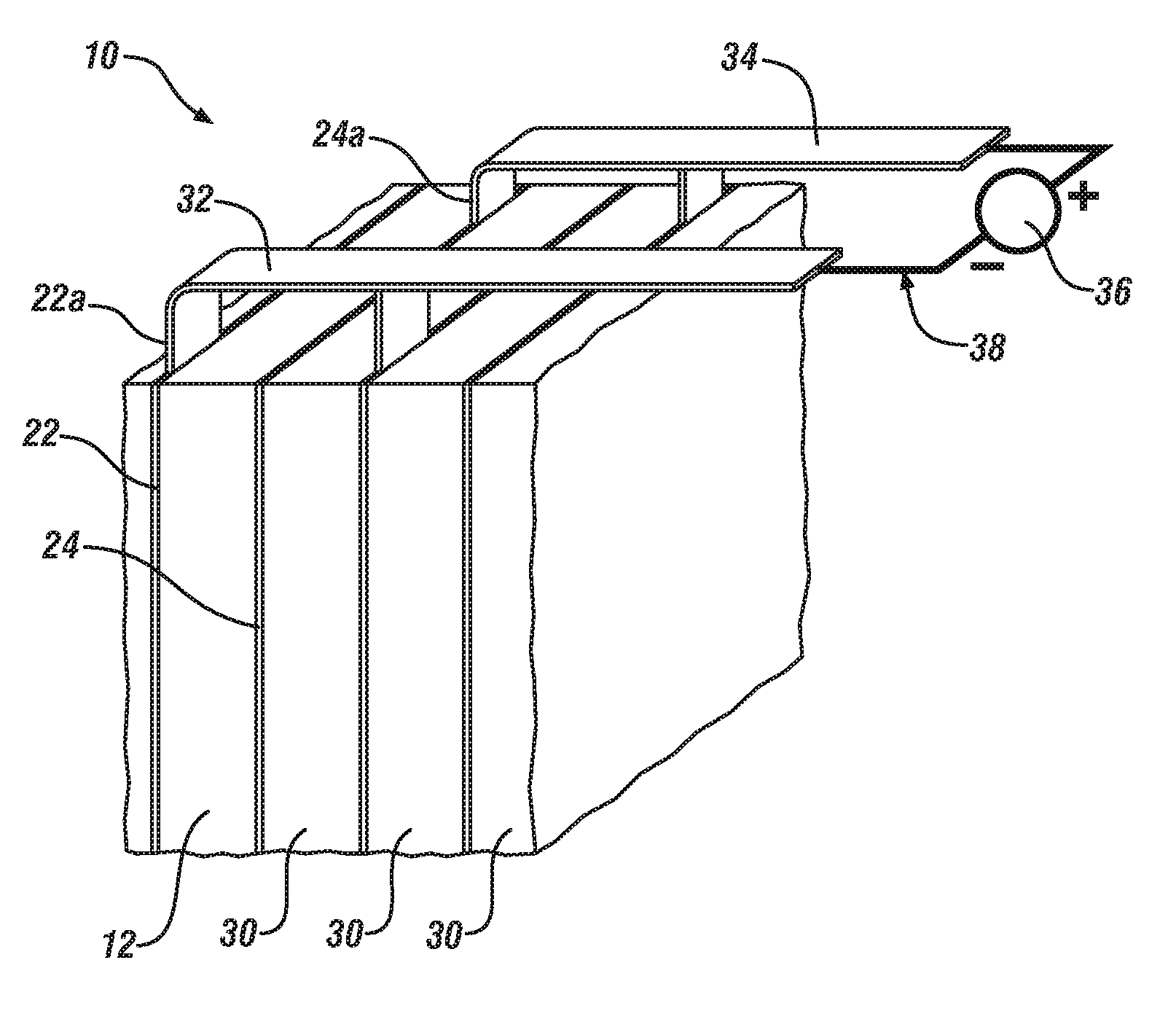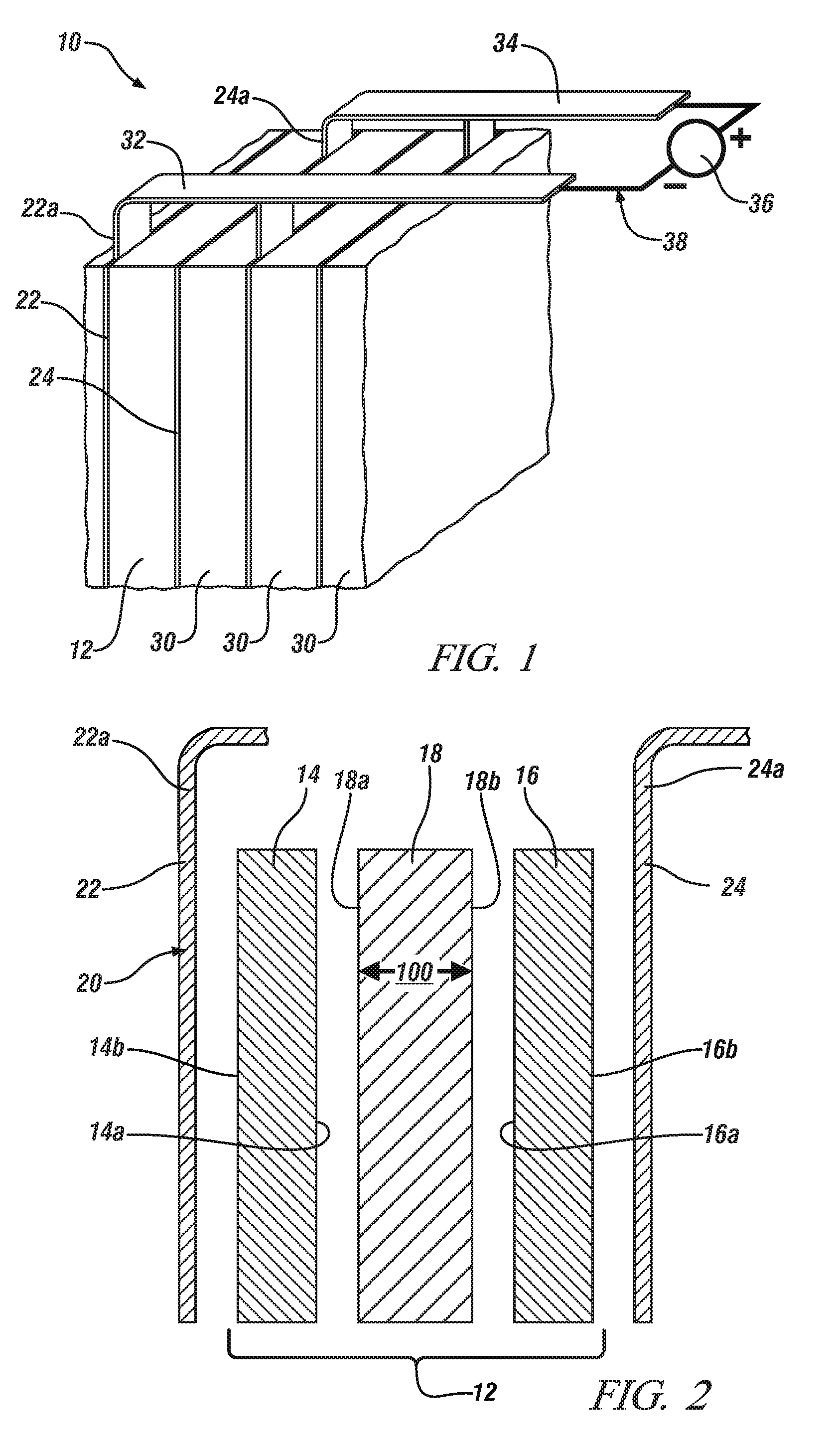Physically cross-linked gel electrolyte
a gel electrolyte and cross-linked technology, applied in the field of physical cross-linked gel electrolyte, can solve the problems of exceedingly difficult manufacture of block co-polymer host into desired form, and achieve the effects of facilitating the formation of gel electrolyte, greater affinity, and more heat resistan
- Summary
- Abstract
- Description
- Claims
- Application Information
AI Technical Summary
Benefits of technology
Problems solved by technology
Method used
Image
Examples
examples
[0041]Two gel electrolytes were fabricated in accordance with the above disclosure. One gel electrolyte was prepared with a poly(amide-b-alkylene oxide) block co-polymer host and the other gel electrolyte was prepared with poly(terephthalate ester-b-alkylene oxide) block co-polymer host. Each of the fabricated gel electrolytes demonstrated a lithium ion conductivity suitable for used in a lithium ion battery.
[0042]A poly(caprolactam-b-ethylene oxide) block co-polymer material was obtained from Arkema under the tradename Pebax® MH 1657 (US headquarters in King of Prussia, Pa.). This particular block co-polymer material contained about 40 wt. % poly(caprolactam) block units and about 60 wt. % poly(ethylene oxide) block units. The poly(caprolactam-b-ethylene oxide) block co-polymer material was dissolved in a 70:30 mixture of ethanol and water (i.e., 70 wt. % ethanol and 30 wt. % water), under reflux at 80° C. with two hours of stirring, to prepare a 3 wt. % Pebax® polymer solution. So...
PUM
| Property | Measurement | Unit |
|---|---|---|
| thickness | aaaaa | aaaaa |
| thickness | aaaaa | aaaaa |
| thickness | aaaaa | aaaaa |
Abstract
Description
Claims
Application Information
 Login to View More
Login to View More - R&D
- Intellectual Property
- Life Sciences
- Materials
- Tech Scout
- Unparalleled Data Quality
- Higher Quality Content
- 60% Fewer Hallucinations
Browse by: Latest US Patents, China's latest patents, Technical Efficacy Thesaurus, Application Domain, Technology Topic, Popular Technical Reports.
© 2025 PatSnap. All rights reserved.Legal|Privacy policy|Modern Slavery Act Transparency Statement|Sitemap|About US| Contact US: help@patsnap.com



